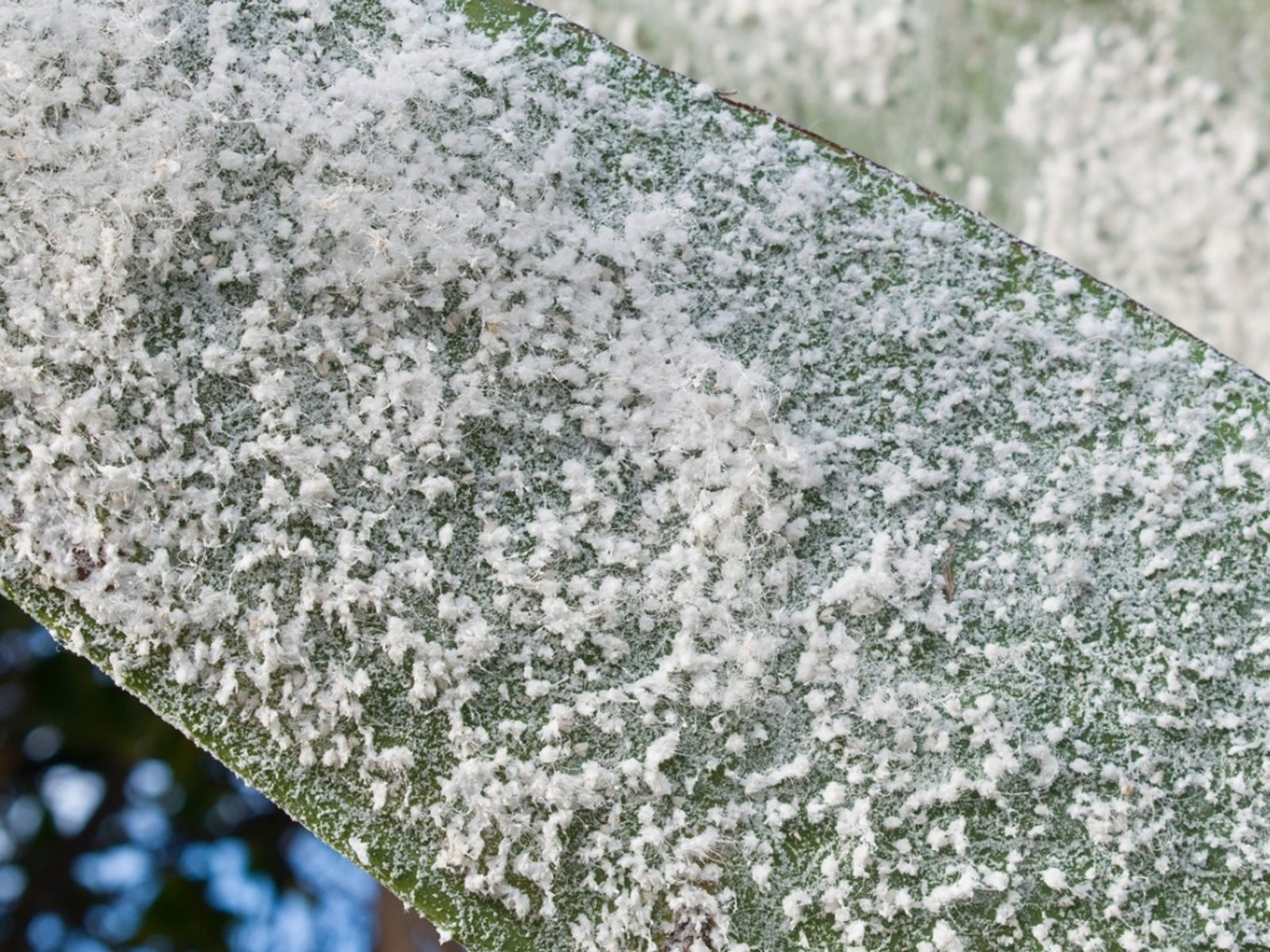Woolly Aphids: Tips For Woolly Aphid Treatment


Although woolly aphid populations rarely get large enough to harm most plants, the distorted and curled leaves they cause and leave behind can certainly become unsightly. For this reason, many people prefer to use some type of woolly aphid treatment to take care of these pests.
What are Woolly Aphids?
Much like other types of aphids, these sap-sucking insect pests are small, only 1/4 inch (0.5 cm.). However, woolly aphids, which are green or blue, also appear fuzzy due to the white, waxy material that covers their body. These pests generally use two hosts: one for overwintering and laying eggs in spring, and one for feeding in summer.
Woolly Aphid Damage
Woolly aphid insects generally feed in groups. They can be seen feeding on foliage, buds, twigs and branches, bark, and even the roots. Damage may be recognized by twisted and curled leaves, yellowing foliage, poor plant growth, branch dieback, or the development of cankers and galls on limbs or roots. Wax accumulation is sometimes seen as well, along with the sweet, sticky residue known as honeydew. In addition, plants may become covered with sooty mold, an unsightly black fungus that resembles soot. Though this does not normally affect or damage the plant itself, getting rid of the aphids and their honeydew will help control the sooty mold.
Woolly Aphid Control
Since severe woolly aphid attacks rarely occur, there is little need for woolly aphid pesticide for control. Generally, their numbers are kept low with natural predators like lacewings, ladybugs, hoverflies, and parasitic wasps. If desired, you can spot treat where the aphids are most abundant using insecticidal soap or neem oil. You can also prune out and destroy infested branches when feasible. When chemical control is deemed necessary, woolly aphid insecticides such as acephate (Orthene) can be used to control these pests.
Gardening tips, videos, info and more delivered right to your inbox!
Sign up for the Gardening Know How newsletter today and receive a free copy of our e-book "How to Grow Delicious Tomatoes".

Nikki Tilley has been gardening for nearly three decades. The former Senior Editor and Archivist of Gardening Know How, Nikki has also authored six gardening books.
-
 Looking For Plants To Give You The Soft And Fuzzies? Try These 5 Fuzzy Leaf Plant Options
Looking For Plants To Give You The Soft And Fuzzies? Try These 5 Fuzzy Leaf Plant OptionsLovers of texture, drama, silver foliage and tactile plants will adore these special sensory garden additions. These fuzzy leaf plant options will leave you all aglow
By Susan Albert
-
 Get Ready For A Summer Of Hummers! Grow These Full Sun Hummingbird Plants and Flowers
Get Ready For A Summer Of Hummers! Grow These Full Sun Hummingbird Plants and FlowersIf you’re lucky enough to enjoy a sunny backyard, make sure you are maxing out on your pollinator opportunities and grow these full sun hummingbird plants and flowers
By Tonya Barnett